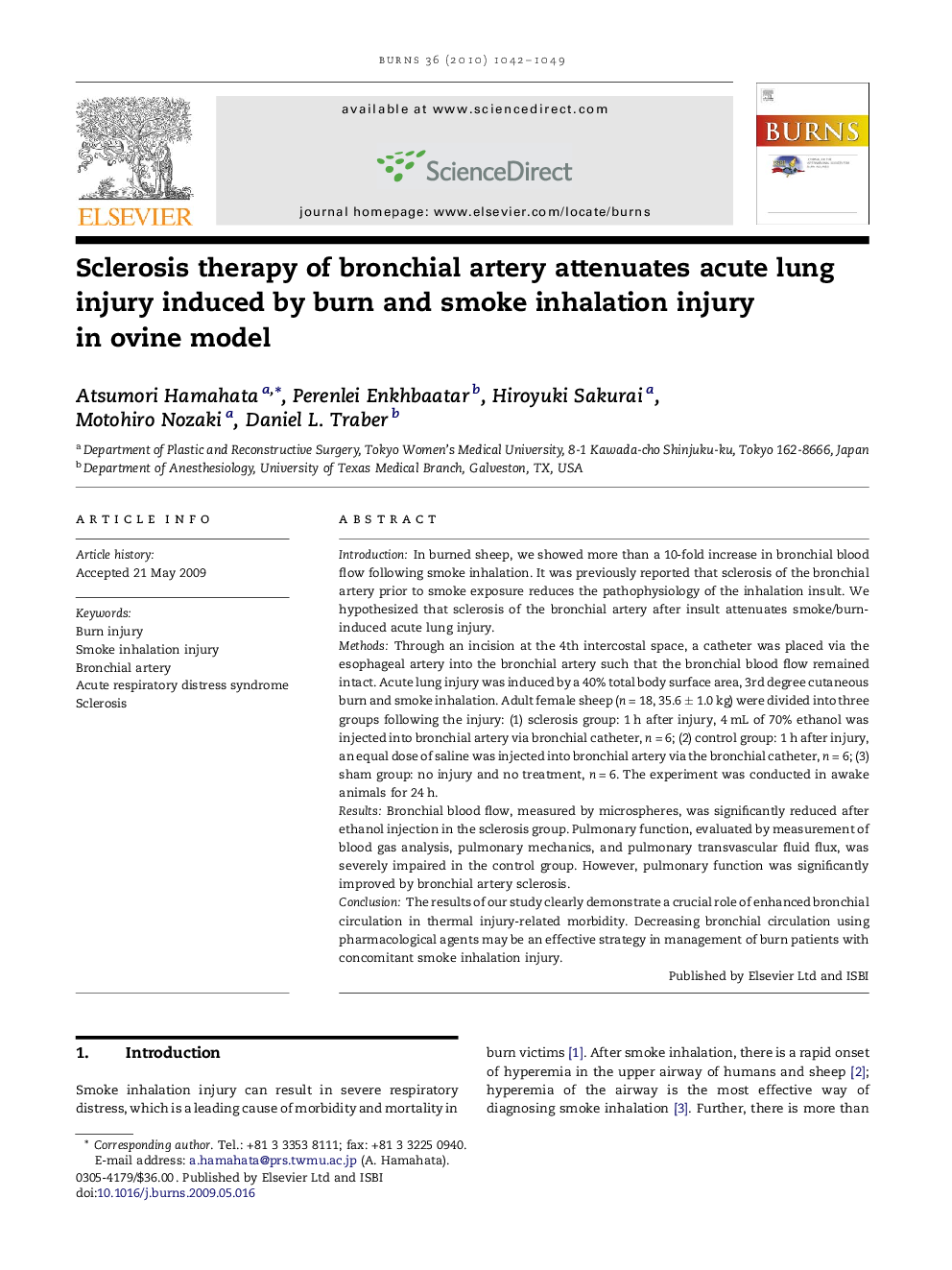| Article ID | Journal | Published Year | Pages | File Type |
|---|---|---|---|---|
| 3105552 | Burns | 2010 | 8 Pages |
IntroductionIn burned sheep, we showed more than a 10-fold increase in bronchial blood flow following smoke inhalation. It was previously reported that sclerosis of the bronchial artery prior to smoke exposure reduces the pathophysiology of the inhalation insult. We hypothesized that sclerosis of the bronchial artery after insult attenuates smoke/burn-induced acute lung injury.MethodsThrough an incision at the 4th intercostal space, a catheter was placed via the esophageal artery into the bronchial artery such that the bronchial blood flow remained intact. Acute lung injury was induced by a 40% total body surface area, 3rd degree cutaneous burn and smoke inhalation. Adult female sheep (n = 18, 35.6 ± 1.0 kg) were divided into three groups following the injury: (1) sclerosis group: 1 h after injury, 4 mL of 70% ethanol was injected into bronchial artery via bronchial catheter, n = 6; (2) control group: 1 h after injury, an equal dose of saline was injected into bronchial artery via the bronchial catheter, n = 6; (3) sham group: no injury and no treatment, n = 6. The experiment was conducted in awake animals for 24 h.ResultsBronchial blood flow, measured by microspheres, was significantly reduced after ethanol injection in the sclerosis group. Pulmonary function, evaluated by measurement of blood gas analysis, pulmonary mechanics, and pulmonary transvascular fluid flux, was severely impaired in the control group. However, pulmonary function was significantly improved by bronchial artery sclerosis.ConclusionThe results of our study clearly demonstrate a crucial role of enhanced bronchial circulation in thermal injury-related morbidity. Decreasing bronchial circulation using pharmacological agents may be an effective strategy in management of burn patients with concomitant smoke inhalation injury.
